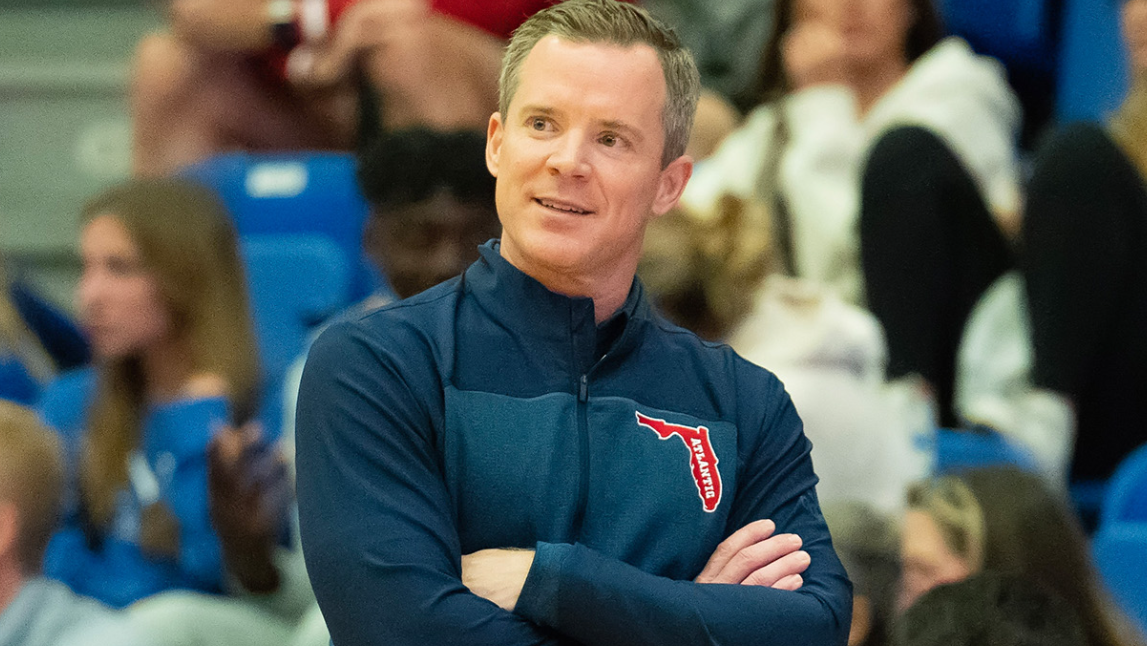Nick Boyd

Michigan has a new men's basketball head coach. Dusty May has been hired as the new sheriff in town and was formally introduced in Ann Arbor earlier this week. Big changes will be coming to Michigan's roster and coaching staff in the coming days and to be prepared for some of those changes, I thought it would be a good idea to comb back through his six seasons at Florida Atlantic. Today we'll be looking at how the roster construction and coaching staff changed year by year, how their results evolved, and see what lessons can be learned for Michigan's sake:
Dusty May's Arrival at Florida Atlantic
As has been repeatedly mentioned in the days since May's hiring by Michigan, the FAU program that he inherited was really bad. They had struggled for over two decades with next to no success, drifting from the Atlantic Sun to the Sun Belt to the C-USA by the time May arrived. The Owls had one NCAA Tournament bid in program history pre-May, a 2001-02 season that saw them go 19-12 (13-7 in ASUN play), finishing 3rd in the conference before winning the conference tourney to gain the autobid. They lost to Alabama as a 15 seed in the opening round, finishing 191st in KenPom.
That was more or less the program's high watermark before Dusty arrived. Mike Jarvis led the program into Conference USA, but most of their time in that league before May was under May's predecessor, one-time Detroit Piston player and coach Michael Curry. The Curry era was pretty terrible, as FAU went 39-84 overall and a woeful 19-53 in conference play. Dusty May remembered years later about arriving at FAU: "I walk in the room and I started crying and said, 'I just committed career suicide,'" in reference to the dire state of affairs in Boca Raton. May would be building a program from scratch, one that was lacking in facilities comparable to even peer schools. As stated in the article linked a couple sentences earlier:
The locker room had these old, ugly wooden lockers. It was exceptionally tiny. There was more square footage for the six showers than the actual space for people in the locker room. The arena sat 2,500, had an outdated scoreboard and looked superannuated. High school teams in the area were playing in better facilities.
May was handed a team that was disastrous. They were 12-19 the last season under Michael Curry, 6-12 in C-USA play. The team was 321st in KenPom offensive efficiency, compared with a 112th-ranked defensive rating. May got straight to work, hiring three assistants in Kyle Church, Akeem Miskdeen, and Erik Pastrana, and then re-assembled the roster. Curry's last team was on the older side and that contributed to May's first team having only three returners of consequence from Curry's final team. Those were Jaylin Ingram, a 6'7" wing who played just eight games, plus 6-1 guard Anthony Adger and 6-9 power forward Simeon Lepichev. The rest of the team was entirely new, which meant that FAU had only 15.3% of returning minutes from the year before, which ranked 345th in KenPom's continuity metric. It was starting fresh.

[FAU Athletics]
That first Dusty May team (2018-19) added players from a variety of sources. 6-7 wing Xavian Stapleton was a down-transfer from Mississippi State and 6-11 big Karlis Silins was a down-transfer from Ole Miss. He added three players from the JUCO route and then brought four recruits on board, two of which became starters in Kevaughn Ellis and Michael Forrest. This team had a remarkably international complexion, featuring a Bulgarian, a Serb, a Senegalese, two Canadians, and a Latvian. Players were acquired from all different means and the team was stitched together by the coaching staff.
Interestingly, they were a much bigger group than what May would have in his later years, starting the 6-9 Lepichev at the four and the 6-11 Silins at center, which allowed them to be a decent rebounding team. The team improved some over Curry's last team offensively but were still very rough (263rd in efficiency). They took a lot of threes, establishing what would be a hallmark of May's program, but shot them extremely poorly. They shot poorly from 2 as well, with an eFG% that ranked 298th as a team, just narrowly better than the 303rd they finished in TO rate. Defensively they were much better, 91st in efficiency, and that was able to carry the Owls to a 17-16 record in spite of the woeful offense. They were 8-10 in C-USA play, 9th in the league, which was a marked improvement on Curry's entire tenure. It wasn't pretty and it wasn't easy, but the May era started out on okay footing in Boca.
[AFTER THE JUMP: the rest of the tenure and some lessons]
46